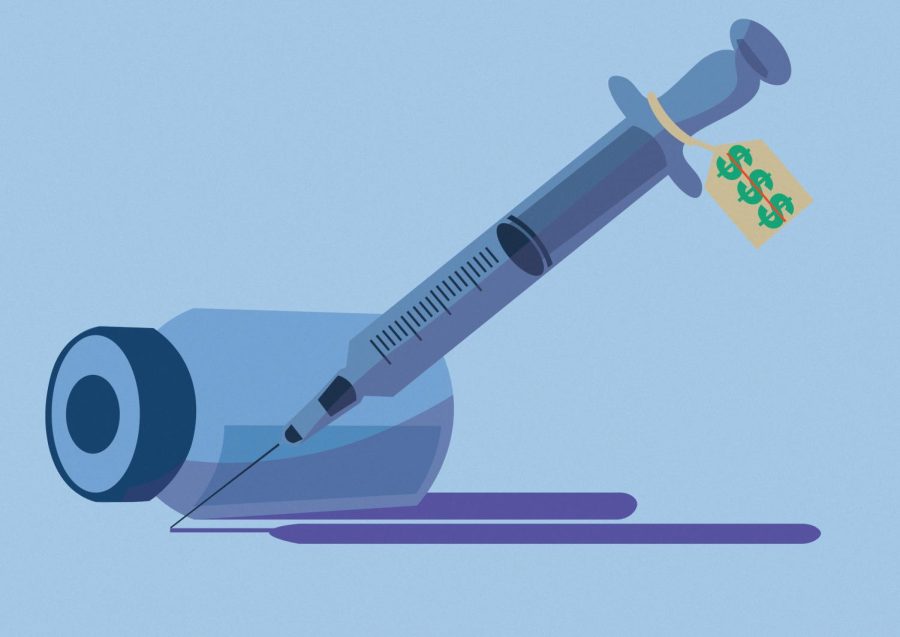U.S. House Passes Bill to Cap Insulin Prices
April 27, 2022
Affordable insulin might be coming for millions of Americans living with diabetes, but they will have to wait until 2023.
The Obama effect is running strong for millions of Americans. Twelve years after implementing the Affordable Care Act (ACA), the Biden administration passed a bill to cap the price of insulin at $35 a month for persons with private insurance and Medicare coverage. The bill would enable Americans living with diabetes to afford their monthly insulin payments by capping the out-of-pocket fees for the purchase. This proposed bill will help offset the high costs impacting the lives of people living with diabetes.
“In my personal experience, I paid $40 per prescription per month for my Novolog and Novolin prescriptions. The cost of insulin definitely affected our monthly budgeting. Sometimes necessary purchases such as other prescriptions, food, or even payment for bills would be postponed to accommodate the insulin prescription pick up. With insulin, even if you didn’t finish all of the prescriptions in the vial that month, it needs to be discarded. It’s not like pills that have a shelf life to ensure maximum efficacy. Therefore, each month you need to pick up a new prescription,” noted one of The Pioneer’s interviewees who wishes to remain anonymous.
The Affordable Insulin Now Act is one of the most talked-about topics in the political arena. The political fight to make insulin more affordable is just one aspect of the issue; the other conflicting interests occur with the pharmaceutical companies and the distribution and selling of insulin from physicians and health providers.
“While the Affordable Insulin Now Act seems great on the surface, the cost of insulin needs to be paid by someone. Co-pays for insulin may be capped at $35 per month, but more likely than not, the insurance companies will increase their premium prices. So now, everyone will be pitching in to pay for the offset of insulin pricing by ways of their insurance premiums,” continued one of The Pioneer’s interviewees who wishes to remain anonymous.
“Physicians are forced to try multiple therapies before they can prescribe the most appropriate higher cost insulin. They add barriers such as prior authorizations from Physicians to be able to get the insulins for the patients. So, overall, a grim & frustrating situation,” stated Sachin Gangupantula, FACHE MBA MS, Founder & Director of Operations of Valley Diabetes & Obesity.
Pharmaceutical companies will continue to thrive under these new measures. “Pharma companies will continue to thrive irrespective of the cap. The 3 Insulin manufacturers continue to keep a lock on the patents (and update them with new patents), so they can raise the prices. They have been releasing generics with tight control and ongoing research to create new biosimilars,” Gangupantula discussed.
Although some programs may provide some financial assistance, it is not long-standing. “They offer patient assistance programs and copay cards to help in the short-run for patients, but these are not long-term fixes. Insurances only cover certain insulins in the formularies, with a lot of restrictions for the more expensive insulins,” Gangupantula continued.
At this time, inflation is driving prescription drug prices higher, so this act will benefit insured patients. “The average cost for the insulins has been around $300-$500 per month, which is quite devastating for several populations. We have patients who save on taking insulin, so they can use the money for food and groceries. Capping the out-of-pocket expenses for patients who need insulin is a definite plus and a lifesaver for some,” Gangupantula said.
The most commonly used forms of insulin cost ten times more in the U.S. than in any other developed country, according to reports by the Mayo Clinic. This prohibitive cost is causing some U.S. patients with diabetes to ration the amount of insulin they use, with life-threatening implications.
Additionally, the cap on insulin will not apply to those uninsured. “For those without insurance, the cap doesn’t apply at all, so the most needy cannot really benefit from it. The cap being proposed may only be accessible for those with Medicare or with insurance. With multiple types of insulins available in the market, it will be important for the cap to apply to all types,” Gangupantula concluded.
“This bill will help make insulin affordable for those that need it. $35 a month per insulin is on the high end of the prescription co-pay spectrum, but it’s definitely better than paying more than that. It will also help families budget their finances, knowing that the cost of their prescription is consistent and won’t fluctuate,” concluded the interviewee.
Healthcare reform is vital to sustaining healthier lives. The number of people living with diabetes has increased over the years. It’s the seventh leading cause of death in the U. S. Approximately 37.3 million people are living with diabetes in America, according to the CDC. About 1 in 10 have diabetes, and 1 in 5 people have diabetes and don’t know it. This is a long-lasting chronic disease, and the most common form is Type II diabetes.
This bill is still sitting with the Senate, and legislation won’t take effect until 2023. For more information on this bill, please visit here.
Editor’s Note: The Pioneer needs to make a correction on this article. We stated that affordable insulin is available for millions of Americans when it currently is not. The bill is stalled in the Senate. We apologize for publishing incorrect remarks and will continue to work to provide our readers with the most accurate and fact-based information.







